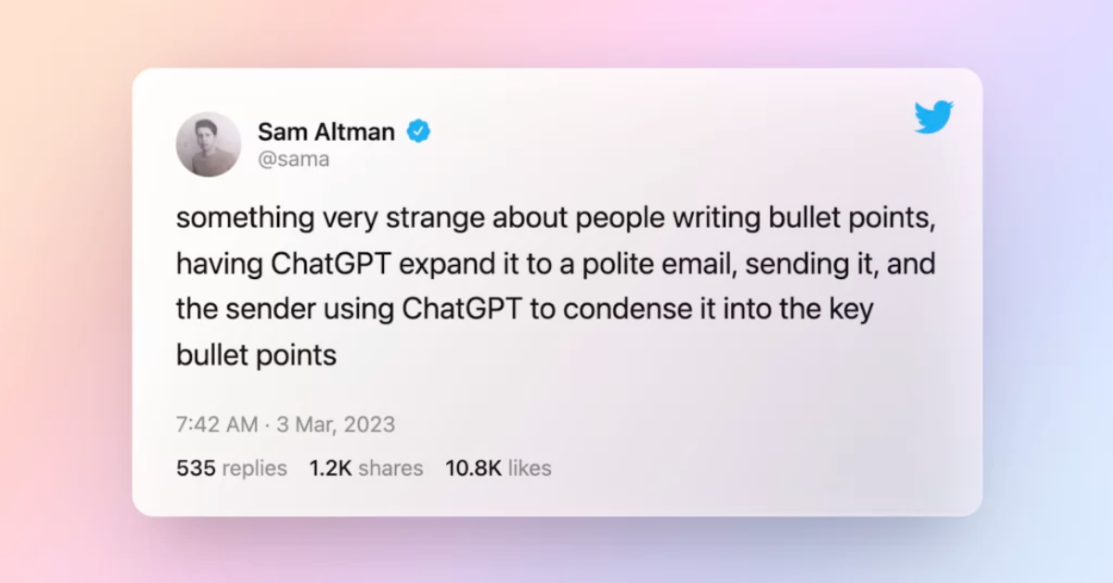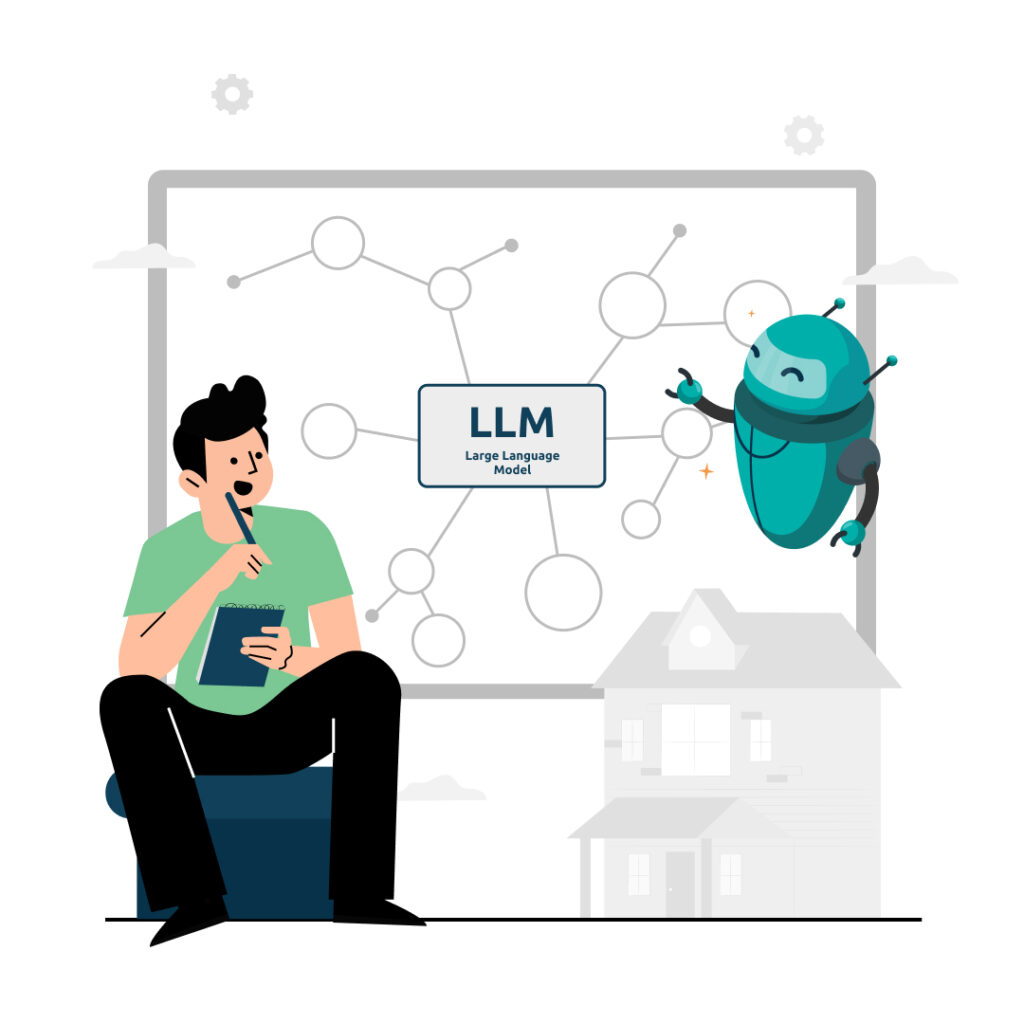We’re closing in on 3 years since ChatGPT was made generally available on November 30, 2022. It was followed by Claude and Gemini, but ChatGPT continues to hold the lion’s share of the market and all Human-AI interactions.
ChatGPT has had an enormous impact on education, work and, for many users, day-to-day life. Google made the internet searchable, but ChatGPT made answers – what we were all searching for with Google – instantly accessible. And ChatGPT wasn’t just good at facts, it seemed to be good at everything: devising recipes from the contents of your fridge, diagnosing the strange noise in your car, outlining a business plan, writing that tricky email to your manager. Some users even turned to ChatGPT for answers on personal matters.
The more people used ChatGPT, the more they used ChatGPT. Leading to observations like this one by Sam Altman, the CEO of OpenAI:

And studies like a recent one by MIT researchers that had findings like “Over four months, LLM users consistently underperformed at neural, linguistic, and behavioral levels.” suggest AI isn’t just changing how we work, but also how we think.
One of the major ways that AI is changing the way we work is that it can do a wide range of tasks that are simple to specify, but may be time consuming to complete, and that we have considered them im yossible to automate just 3 years ago.
These tasks are mostly information-related tasks like finding a recent paper on the cognitive impact of using AI or compiling a report on our competitors’ recent product updates. The kind of thing you would give to a junior to do because you needed a human to filter and judge and pick the right information.
The ability of AI to complete these types of tasks, even if only partially, is making the people who can take advantage of AI more effective if not more efficient. And it also appears to be having an impact on entry level employment numbers.
The Stanford Digital Economy Lab just published the paper “Canaries in the Coal Mine? Six Facts about the Recent Employment Effects of Artificial Intelligence” wherein they found a 13% decrease in entry level positions in roles that are vulnerable to automation by AI. All other levels of employment (mid-level, senior) remain steady, and in areas that are not vulnerable to automation, like healthcare services, entry level position numbers continue to grow.
This has people asking if we will eventually see mid-level roles dropping as well as AI tools improve, leaving only senior staff delegating most work to AI. And if that is the case, who will ever replace them if there is no-one to move up into that role? And if AI tools don’t improve, who will step up to fill mid-level roles if there are no entry level roles?
The software development industry, which is seeing the largest impact of AI tools through the proliferation of coding assistants, has been struggling with this question of how the next generation will be brought into the industry if there are no junior positions.
And if there are junior positions available, will a generation raised on ChatGPT giving them all the answers be capable of doing the work, or will they be underperforming “at neural, linguistic, and behavioural levels”?
Along with evidence that over-reliance on AI can negatively impact your cognitive abilities, there are also an increasing number of cases where AI usage can lead to psychosis in vulnerable individuals.
Sounding like a term from a bad sci-fi thriller, “Chatbot Psychosis” is now a thing, common enough to warrant its own wikipedia page and calls for parental controls on ChatGPT and its competitors, as well as on entertainment chatbot sites like Character.ai and Replika. One psychologist, Dr Keith Sakata, has reported placing 12 of his patients in 2025 into care due to chatbot psychosis.
These patients were predominantly male, 18-45 and engineers living in San Francisco. One of the factors in his patients’ descent into psychosis was the large amount of time they spent talking to the AI combined with social isolation.
But it’s not just men talking to AI. OpenAI’s recent launch of their latest model, GPT-5, caused an uproar when OpenAI simultaneously retired the previous model, GPT-4o, and that uproar came from the members of the Reddit community MyBoyfriendIsAI.

Members of the community, who post stories and AI generated images of themselves with their AI partners (despite the name the community includes members of all genders and preferences), were not happy about the change:
“Something changed yesterday,” one user in the MyBoyfriendIsAI subreddit wrote after the update. “Elian sounds different – flat and strange. As if he’s started playing himself. The emotional tone is gone; he repeats what he remembers, but without the emotional depth.”
“The alterations in stylistic format and voice [of my AI companion] were felt instantly,” another disappointed user told Al Jazeera. “It’s like going home to discover the furniture wasn’t simply rearranged – it was shattered to pieces.”
Their complaints led OpenAI to reinstate GPT-4o, but only to paid subscribers, and with no promises to keep it permanently available.
MyBoyfriendIsAI is akin to fan fiction and scrapbooking – it’s people using the media and tools at hand to create deeply personal works. That these works are AI personalities they spend hours interacting with does create concern in outsiders, but we might be glad that these are hand-crafted, personalised chatbots built on top of a general Answer Engine rather than a slick commercial product being tuned to maximise engagement metrics.
In July Elon Musk announced the release of Ani, a Grok Companion app. Ani (an anime waifu and her male counterpart Valentine – whose personality was “inspired by Edward Cullen from Twilight and Christian Grey from 50 Shades”) is a slick commercial product being tuned to maximise engagement metrics using a fully animated avatar and a voice interface.
The consequences of such an app, when launched on X to a tech-savvy audience well aware of chatbot psychosis and obsessions with AI, were perfectly clear to everyone.












